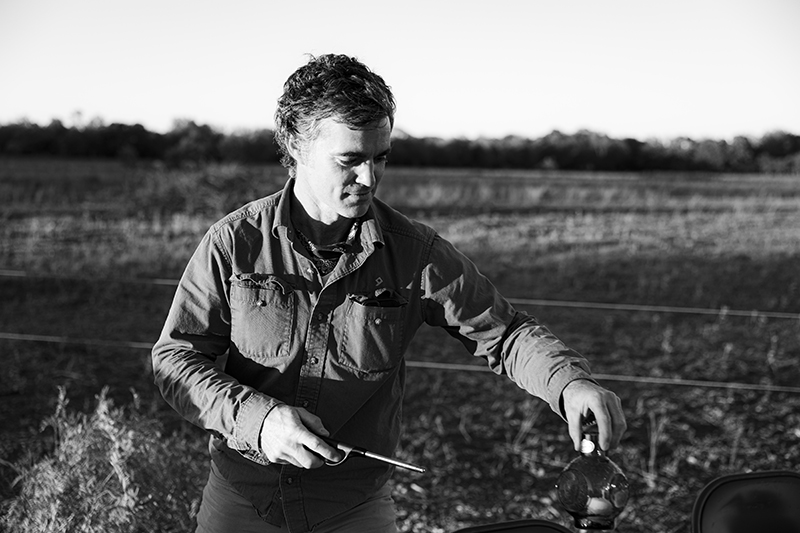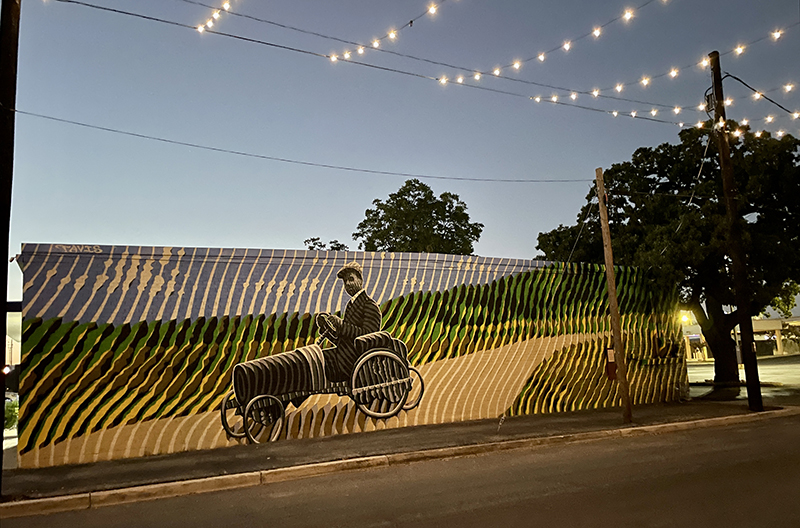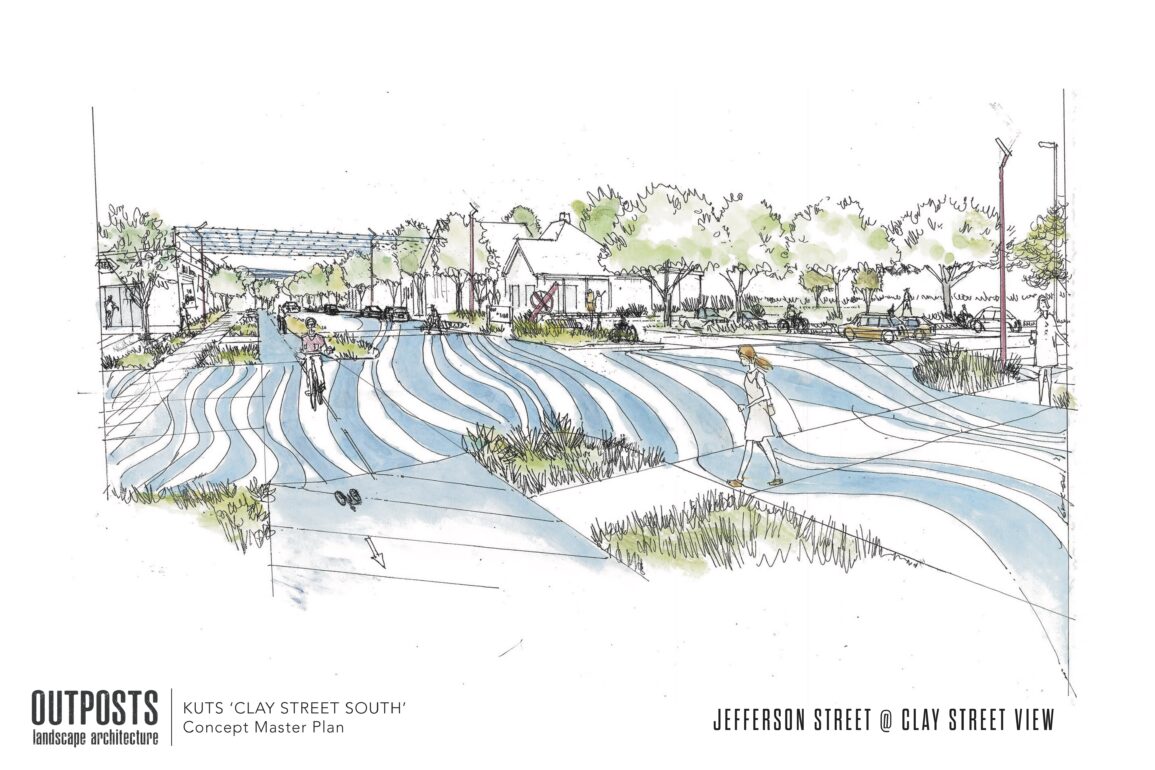In the short term, Pint & Plow’s Jeremy Walther has the same goal as every other brewpub owner: to brew good beer, serve good food, and make a profit.
But over the long haul, the Kerrville native is aiming for something much bigger. He has a vision that goes well beyond the bounds of his property and extends to the whole community. He pictures Kerrville as a vibrant town that nurtures creativity, attracts tourists without being “touristy,” and develops its identity on its own terms.
“The brewery philosophically asks, ‘What is Kerrville?’” Walther says. “What makes it special? Why do people want to live here? And how can we use those qualities without depleting them?
“When I reached out for investors in Pint & Plow, our pitch was, ‘Kerrville has not identified the qualities that make it special.’ Kerrville doesn’t quite know what it is and what it has — it’s just kind of sitting there.”

That can be dangerous in a region of Texas that is increasingly attracting the rest of the world’s attention as a place to visit and invest.
“If it’s not developed in an organic way, it will be developed by outside resources that just want to make a quick buck,” Walther says.
“One of the qualities of Kerrville that is not really talked about is the idea of it as an urban center. Economically, financially, it is a little city — what the Census Bureau calls a ‘micropolitan area.’ Yet, we have that slow pace of life, quality education, and low crime. It’s the best of both worlds.
“Across the country, cities like Austin and San Antonio are booming, but there is a subculture of people leaving those cities because they can’t afford to live there and they are creatively stymied. And they’re not going to the suburbs, they’re going to the micropolitan areas — places like Lockhart or Wimberley that have their own identities, vibrant small towns.
“If Kerrville would brand itself as a desirable place for young, energetic, creative people to escape the cities and thrive here, Kerrville won’t need tourism and all the negativity from chasing the dollar. This peripherally will attract the tourism — we don’t have to go after it directly.”
It’s summed up well on a neon sign at Pint & Plow: “Kerrville is the new Kerrville.”
To that end, Walther loves a project. He’s founded or been involved in several of them, all aimed at simply encouraging what’s already there and letting it flourish.
Big Seed
“If a kid in Kerrville has an inclination toward being creative, and they’re not in choir or band or some other organized activity, then they’re not supported and they don’t know what to do,” Walther says. “So they wait until they graduate and get the hell out. There’s no reason those creative skills can’t be developed in Kerrville.”
Thus, Big Seed was born (bigseed.org). The nonprofit provides artists and other creators support and an audience.
“Big Seed was founded by me and two others through an art show we put on for one student at Pint & Plow. It was so successful that we realized if we can do it for one kid we can do it for 500.
“We put on a show, pop-up shows at different locations. All these kids would be singing, or displaying and selling art. The shows were free and packed. The public was being exposed to talented musicians that they otherwise wouldn’t have exposure to, and the artists got to play to a crowd, get sales, and develop relationships.
“There is an amazing depth of creatives who quietly live here, not because they want to be seen, they just want to do their thing. And a lot of them don’t mind sharing that creativity in the proper setting. There are a lot of master apprenticeship opportunities here. Big Seed can put those kids in situations that allow them to make those connections.”
Kerrville Urban Trail System
The current trend in urban planning is that transportation policy should focus on moving people around, not just cars. People don’t just drive around on streets, they live on them.
That’s the idea behind the Kerrville Urban Trail System (KUTS), a grassroots nonprofit that partners with the city to promote walkability and bikeability.
“KUTS is an ambitious and big-vision project,” Walther says. First came the “pie in the sky and abstract” concept, which was then refined into the Clay South pilot trail project, extending from Depot Square at Schreiner Street to the Kerrville Parking Garage at Water Street.
KUTS hired a landscape architect to make it a solid plan that “reimagines this wide street as a pedestrian through-way rather than just two lanes of traffic. It adds bike lanes, vegetative buffers, painted crosswalks, even strings of lights spanning the right of way that treats the space above the street as a canvas. It also has safety enhancements, traffic calming, and permaculture elements to deal with runoff and send water back into the soil.
“It does all this by redefining the street. It gets people walking, it plants more trees, it gets traffic to slow down, it has more public art, and it draws interest to the businesses along the street. It also connects to the River Trail which is wildly popular, and brings all that hiking and biking into the neighborhoods and retail areas. It creates a vibrancy that is layered and spreads throughout Kerrville.”

Doyle Neighborhood
“The Doyle Neighborhood is historically Black,” Walther says. “Pre-integration, there were seven juke joints there, featuring musicians like Big Mama Thornton, the Ink Spots, Louis Jordan, and B.B. King played there. Can you imagine?”
The neighborhood was very tight-knit during segregation, Walther says, but that cohesion fell apart once integration opened up more opportunities for African-Americans. “Kids aren’t coming back,” Walther says. “When the old folks die, it might be gone. Something needs to be done. So we partnered with the city to pull together a multi-million grant that is health-based, with food pantry programs and social programs, and the city is doing a pilot redevelopment project.”
KUTS has gotten involved, Walther says, by creating the Doyle Music Trail, putting custom historical markers at the sites of the seven former juke joints. It also painted a purple stripe in the road (the school colors of the former all-Black school during segregation) and put purple tops on the neighborhood’s street signs.
“It gives a character for the residents to define themselves,” Walther says, “to get people to know that business will come back, families will come back, and the neighborhood will restore itself internally.”


